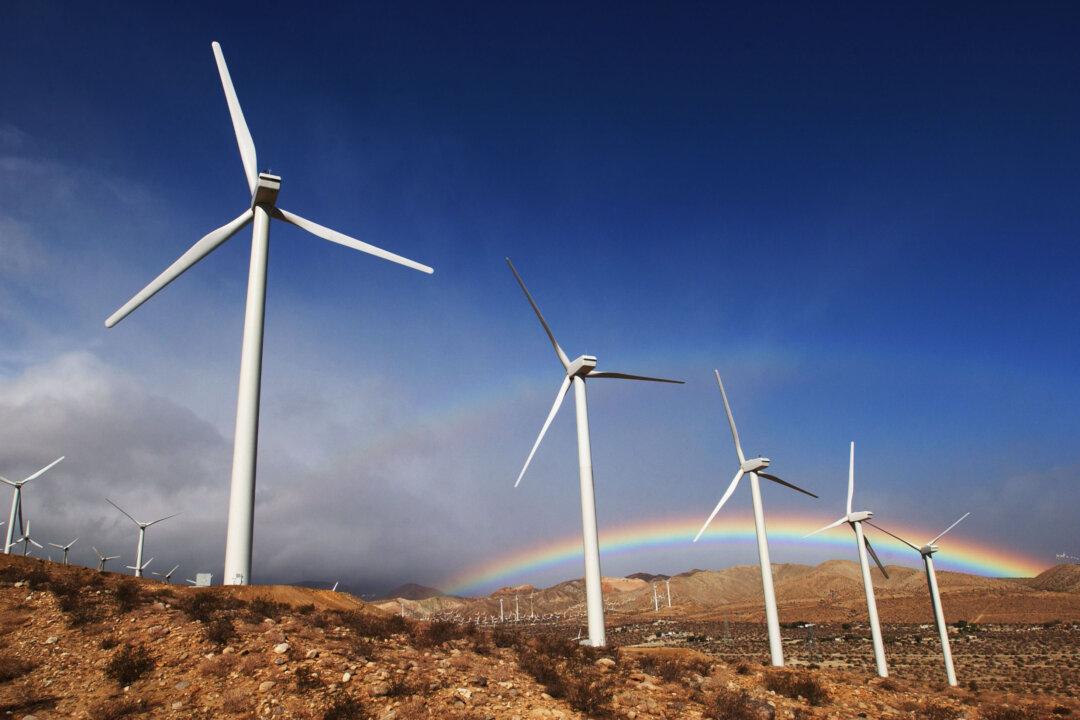One of the largest wind farms in the world is coming to Wyoming, but the energy it produces will be sent to California. A 750 mile transmission line is all part of the plan.
When it comes to energy consumption, Wyoming is coal country. But the state also boasts one of the densest concentrations of wind energy potential in the nation. California, meanwhile, has high energy costs, plus ambitious goals for a green future— a state mandate calls for a third of all energy consumption to come from renewable sources by 2020.
The Chokecherry and Sierra Madre (CCSM) wind farm is a project that makes the most of wind resources from one state, and the energy policy of another.
CCSM developer, the Power Company of Wyoming (PCW), has spent the past eight years in the planning and permits phase. Once federal land managers give the final go ahead—expected in the next few months—CCSM will take another eight years to complete, at an estimated cost of $5 billion.
According to PCW communications director Kara Choquette, despite the challenges, the project still makes good business sense.
“The wind resources on this ranch in Wyoming represent the nation’s very best, making it an especially attractive wind power plant from a lower cost of energy to the ratepayer perspective,” Choquette said in an email.
Wind on the Rise (and Fall)
From a quaint concept to an economically viable energy source, the U.S. wind industry has made great strides since the turn of the millennium, thanks in large part to big names in the traditional energy sector. General Electric has been a driving force in improving turbine efficiency, while Shell, BP, and other oil giants have backed substantial wind projects across the country.
PCW’s parent organization—Denver based Anschutz Corporation—is also in the oil and gas business, but a fossil fuel pedigree doesn’t always ensure success when diversifying to wind power. Texas oil tycoon Boone Pickens promoted a very ambitious wind project in 2008. It was supposed to be the biggest in the world and put America on a path of energy independence, but the project failed miserably when natural gas prices fell.
Output Up 30 Percent
Despite the Pickens debacle, today 39 states have operating utility scale wind projects. According to the American Wind Energy Association, the U.S. wind industry has upped its energy output more 30 percent over the last five years.
According to Andrew Swift, associate director of the National Wind Institute at Texas Tech University, wind power has proven to be a formidable competitor in the energy marketplace. He points to an April 2014 report from the U.S. Energy Information Administration which puts modern wind power on par with coal. The fluctuating price of natural gas, however, means backing a big wind project still presents a significant risk.
Helping to offset this risk are tax credits designed to encourage renewable energy production. Like them or not, these controversial incentives dictate the pace of wind development.
“It has made wind very much a lurch industry,” said Swift. “The tax credit is in everybody builds as fast as they can. It expires and everybody stops and waits till it’s going to come on again. You’re continually reading the political tea leaves, and that just drives costs up.”
Pipeline
When completed, CCSM will be a 1,000 turbine facility that can produce 3,000 megawatts of power. But a crucial factor for success is an adequate delivery system. PCW’s plan includes installation of the Trans West Express (TWE), which will connect CCSM to the California power grid.
TWE will run through a checkerboard of public and private land, traversing four states. According to Swift, this transmission line is longer than usual, but still a normal consequence of a modern wind farm.
“We’re in Lubbock, Texas which is in the panhandle of wind country in the southern plains. But our load centers are in Dallas and Houston and San Antonio,” Swift said. “So the product is produced here and the load is hundreds of miles away. Same situation.”
Even with the added expense of the TWE, energy produced at CCSM in Wyoming promises to cost less than power generated in California.
Image Problems
Wind power certainly has its selling points: it’s a sustainable source of clean energy that needs virtually no water (nuclear, coal, and natural gas power plants all require about 500 gallons per megawatt hour on average.) But as the industry has grown, so have the glaring downsides.
Bird and bat deaths have left a black mark on wind power. Modest estimates suggest that turbine propellers kill over 150,000 birds a year.
“I think the industry has been very sensitive to these things,” said Swift. “You can kill a hundred million dollar project overnight just by bad siting, and not paying attention to birds and habitat. A lot of money is spent on pre-installation studies by biologists.”
Since 2010, PCW has included habitat protection in their turbine layout plan, which has since been redesigned to minimize potential impacts to the sage-grouse and golden eagle. A team of engineers, archaeologists, and biologists have identified “turbine no-build zones” and have even worked to improve the quality of vegetation on the CCSM site to support native bird survival.
South Texas wind farms have minimized bird kills with sophisticated detection systems to monitor migrations—the turbines actually stop spinning when radar spots an approaching flock.
But Swift cautions that even the most thoughtful plan will still cause problems.
“There’s a saying in the energy business: there is no free lunch. If you generate electric power, it’s a manmade product, there’s going to be impacts on society and the environment. It’s a matter of balancing the impacts to the benefit,” he said.





